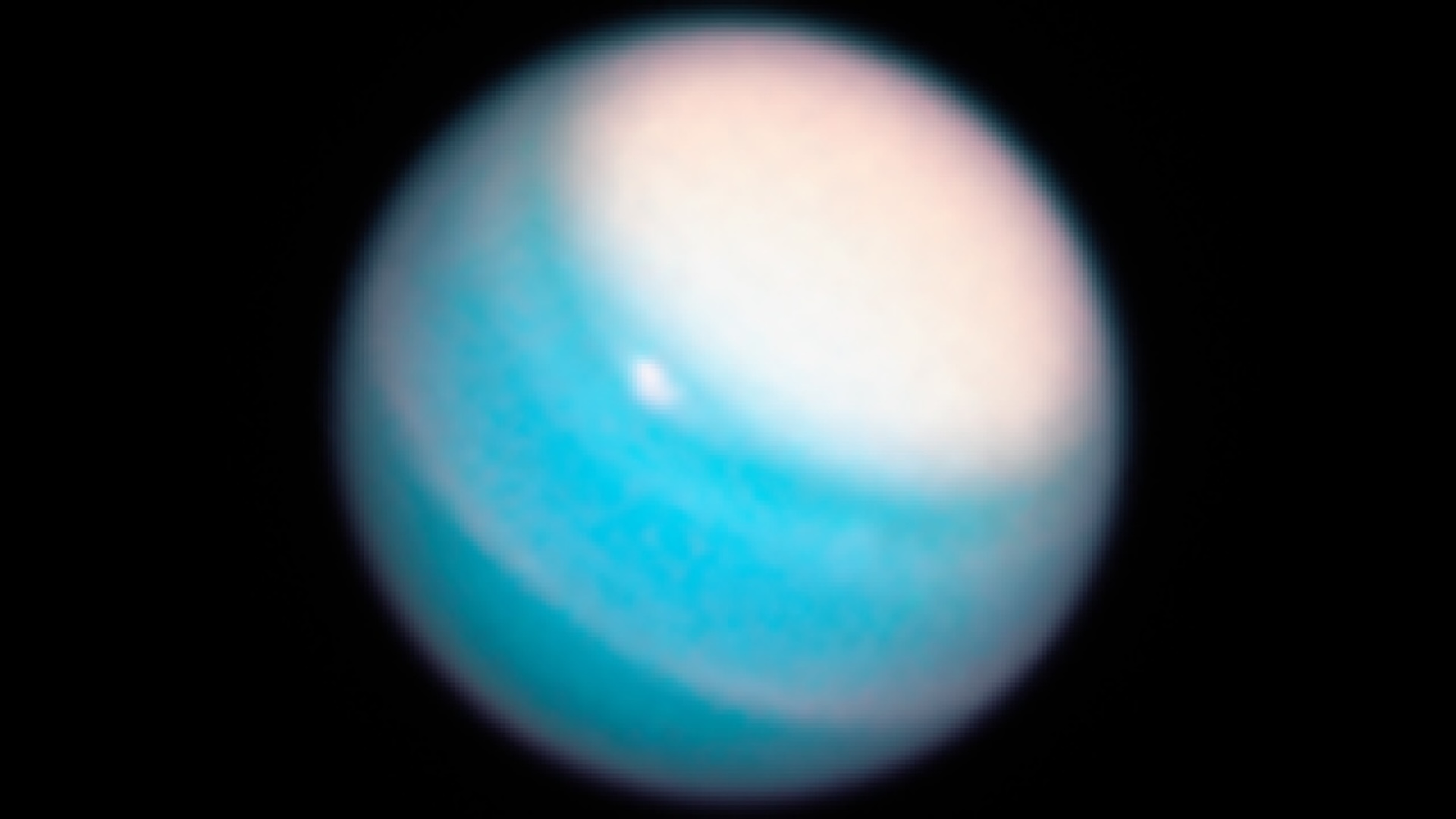
Scientists have uncovered the secret ingredient fueling supercharged storms on Uranus and Neptune: methane.
Uranus and Neptune are the outermost planets of the solar system and are known as ice giants because they are rich in water. Scientists understand very little about these distant realms. But after the Voyager 2 spacecraft flew by them in the 1980s, scientists realized that these worlds occasionally host massive, short-lived storms. The violent-but-fleeting storms pop up every few years and are so big you can see them (with a telescope) from Earth.
Researchers have long wondered why the storms on these planets are so unpredictable. Now, a team of astronomers has proposed that methane may hold the key to controlling these storms.
To power a storm, heat must rise from a planet's warm interior to its surface. There, the heated gas begins to cool, which can cause turbulence and trigger storm formation. But the interiors of these planets are always warm, and the outer surfaces are always cool, so why don't storms occur all the time?
In a paper published to the preprint database arXiv on Sept. 3, the team pointed out that methane is the third-most abundant molecule, after hydrogen and helium, in the deep atmospheres of both worlds. Normally, methane doesn't do much except float around in the atmosphere, but the researchers used modeling to show that in certain circumstances, this simple hydrocarbon can dramatically alter heat transfer within the planet.
Methane usually exists as a gas, but in the upper regions of these ice world atmospheres, methane may condense, forming droplets that fall to lower altitudes, the study authors proposed. There they reheat and rise again, completing a cycle similar to the water cycle on Earth. Once the atmosphere becomes too saturated with methane, a stable layer forms. Like a wet blanket, the stable layer keeps heat from reaching the surface, which in turn suppresses storm formation.
These layers are most commonly found throughout all latitudes of Neptune, and around the equator and mid-latitudes of Uranus. But the poles of Uranus don't have enough methane to create a stable saturated layer. As a result,heat can easily rise to the surface and drive larger storms, the study found.
On the other hand, Neptune has more methane overall, and the researchers found that occasionally that methane can rise from the stable layer and disperse through the atmosphere, enabling heat to flow and storms to form, before everything settles down again.
Further work will be needed to understand how all the factors in these ice-giant atmospheres interact
That knowledge could then be used to better understand planets beyond the solar system, the study authors wrote.







